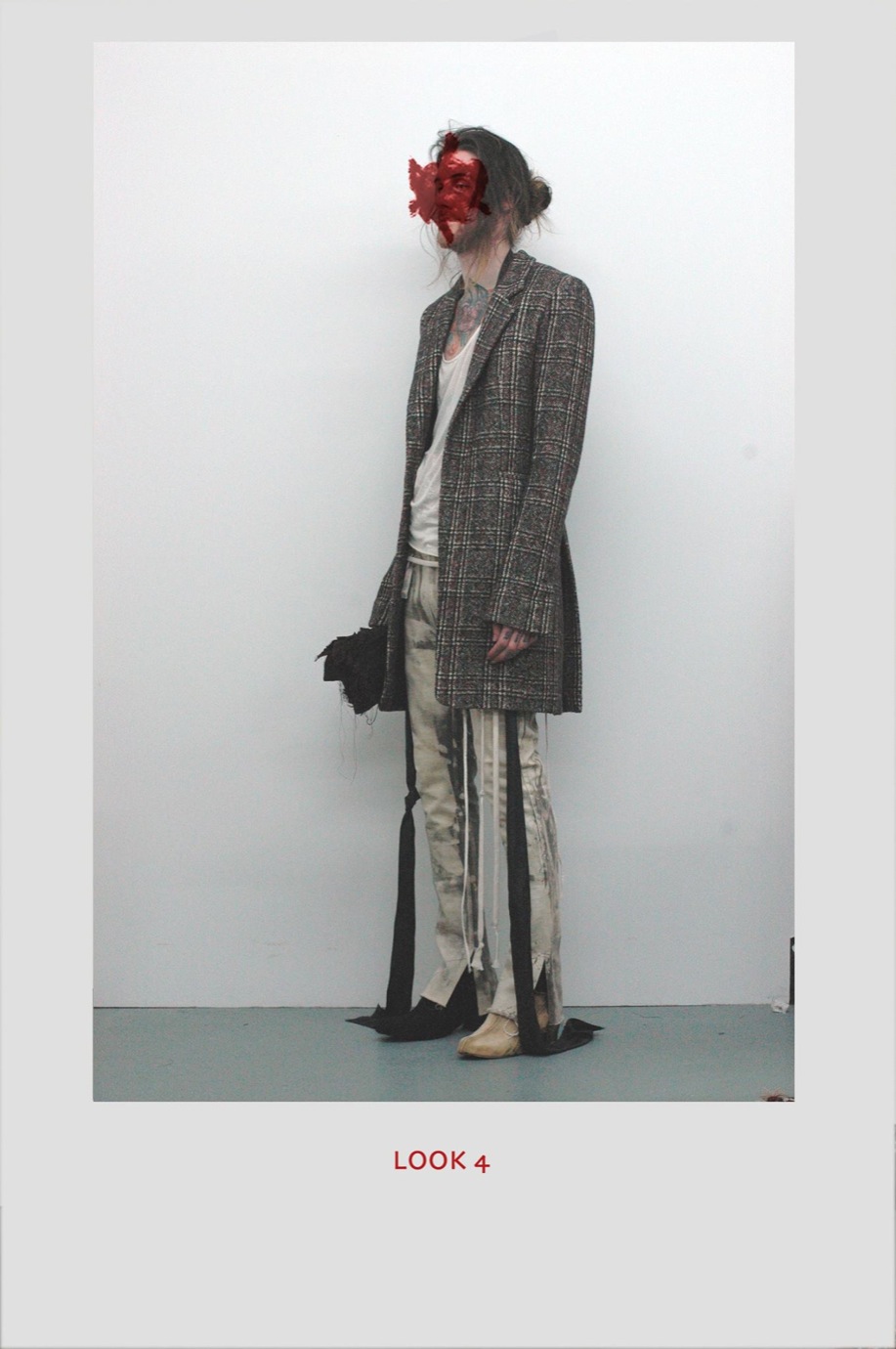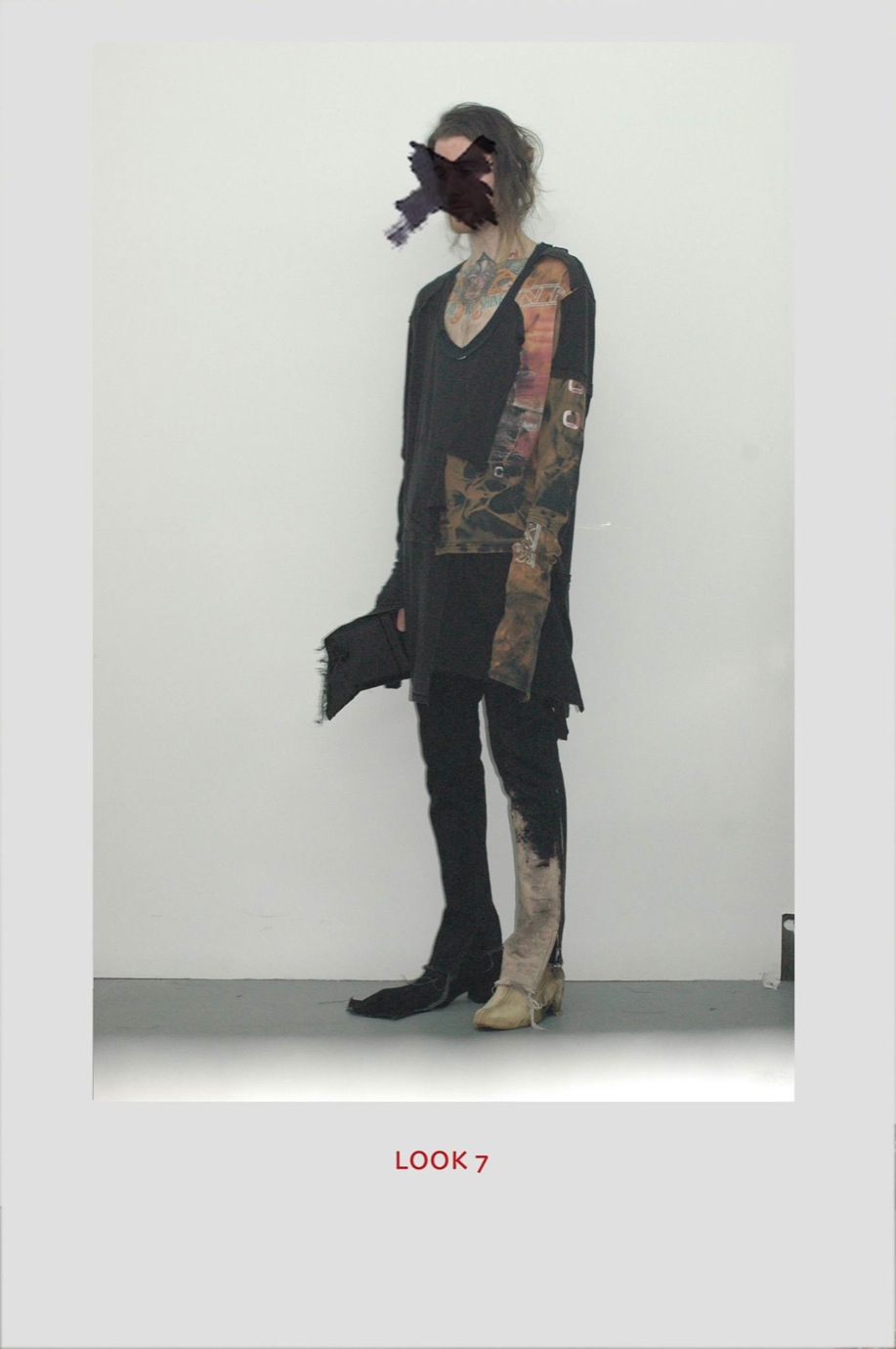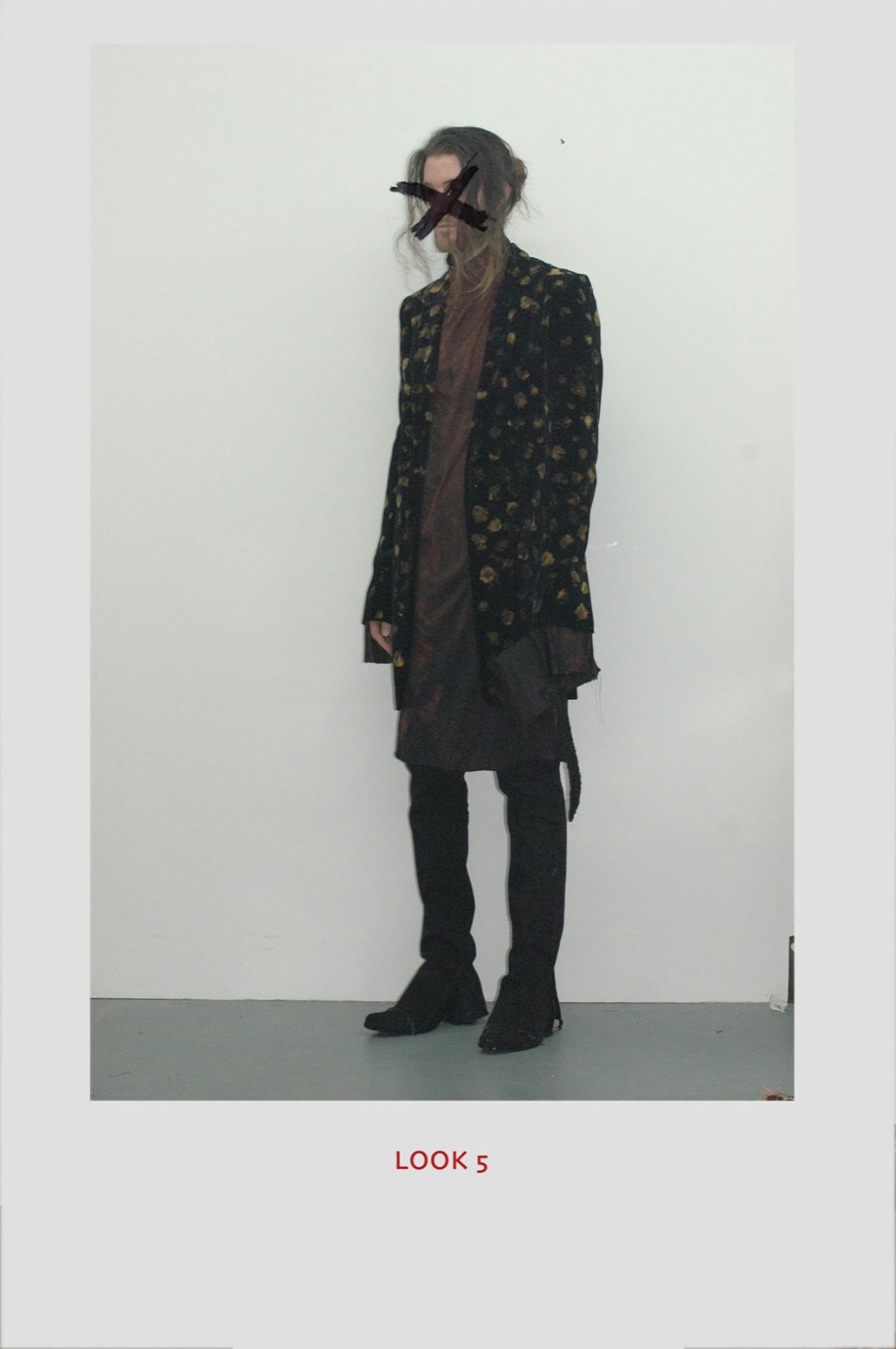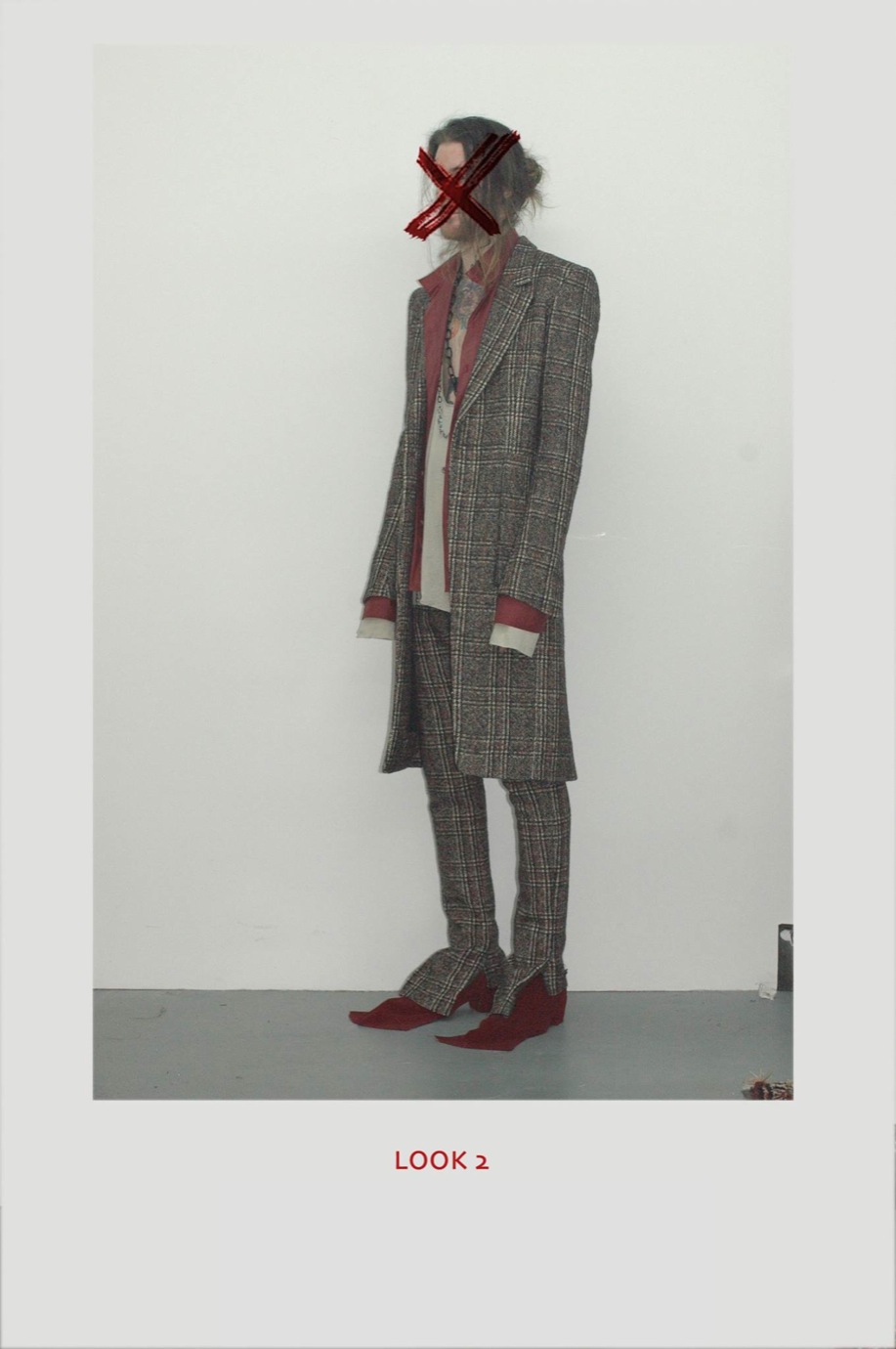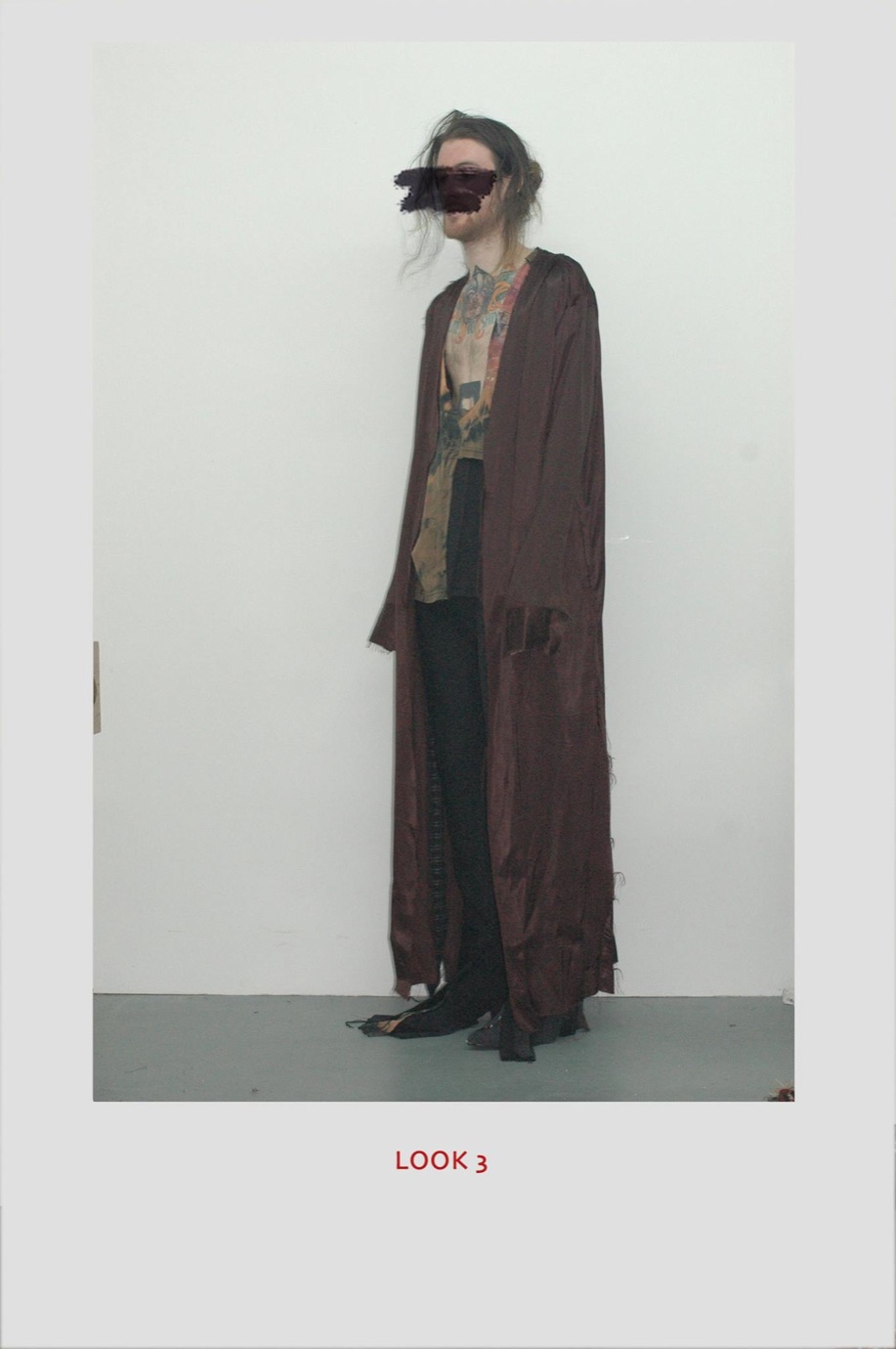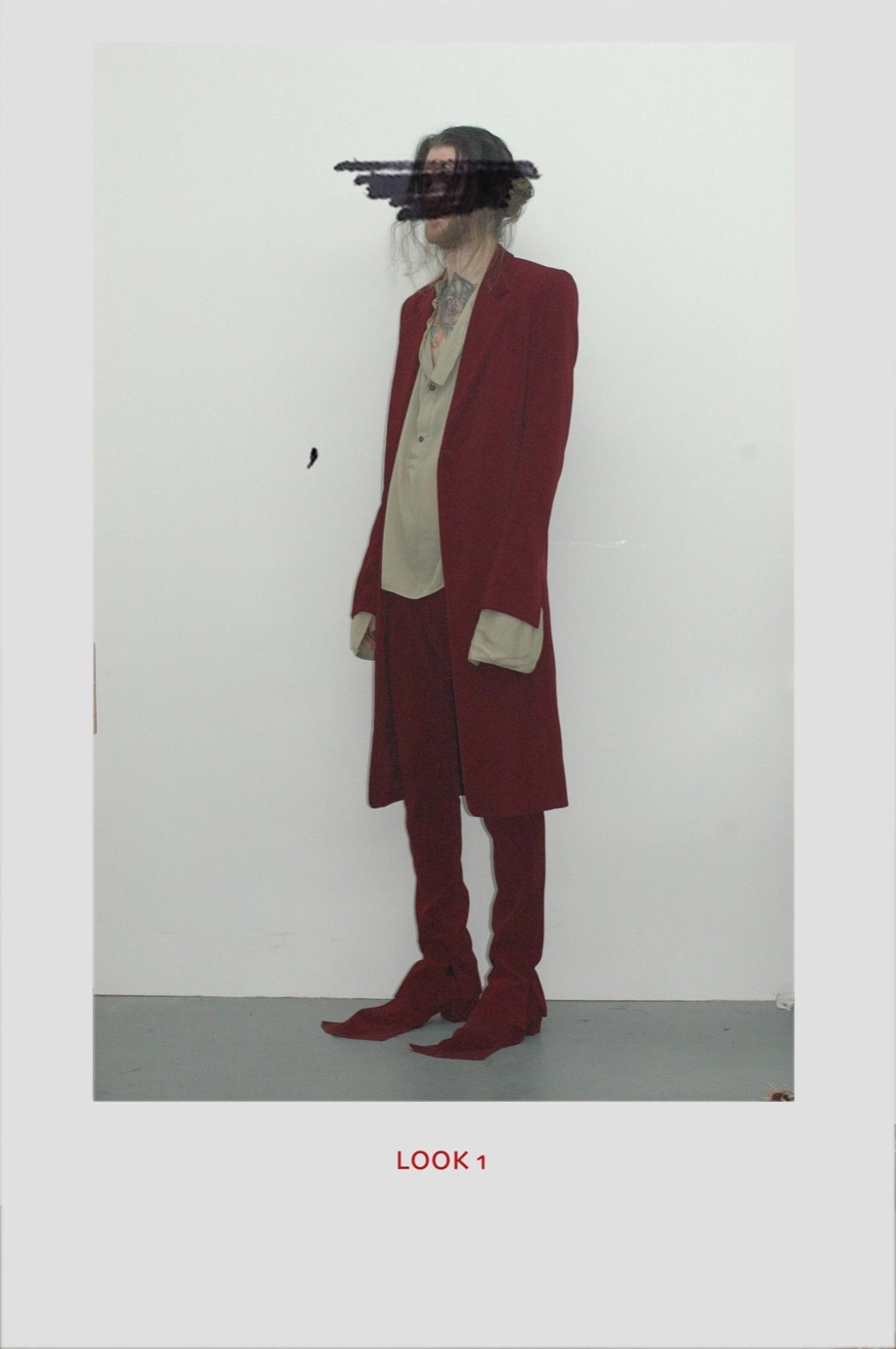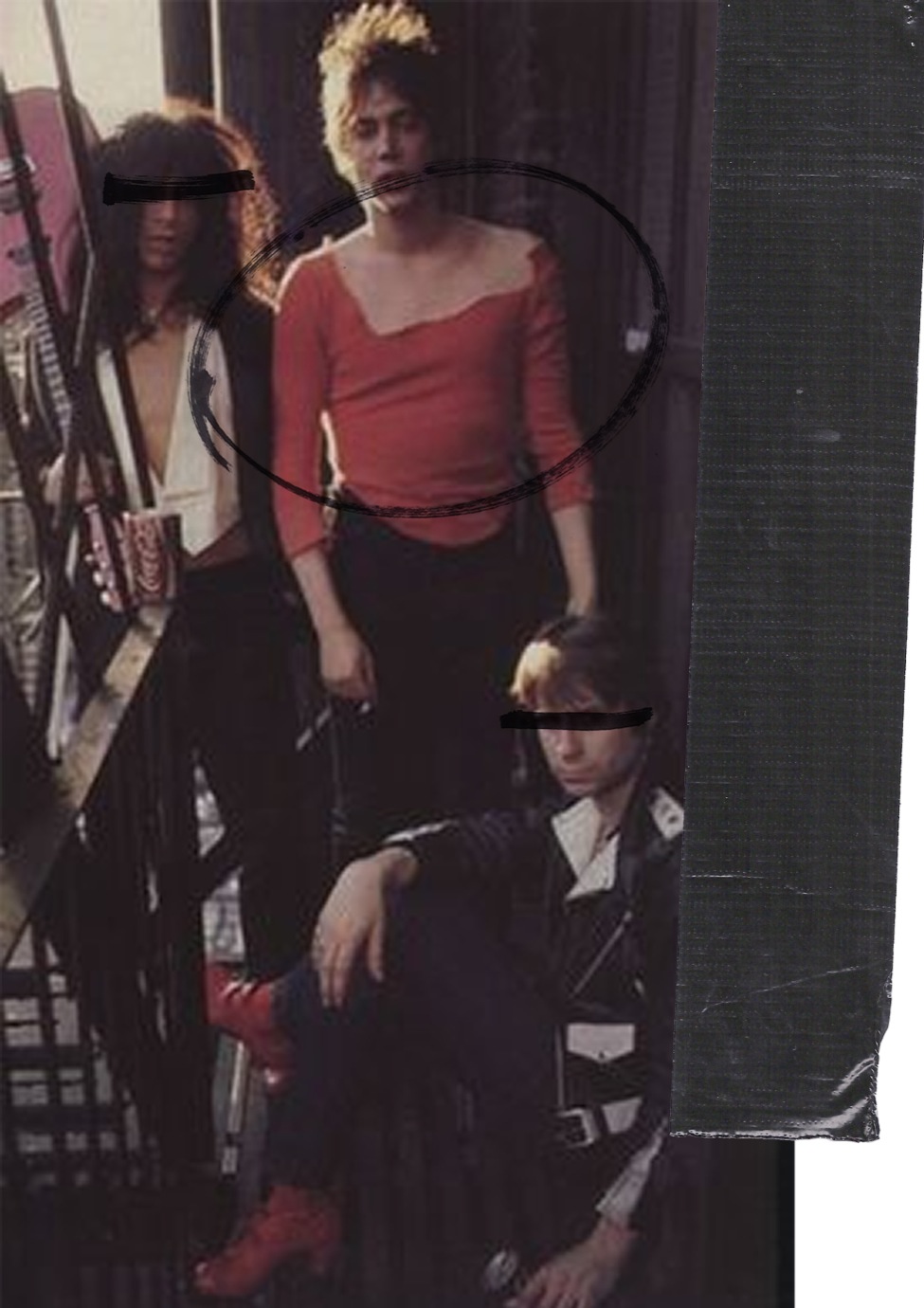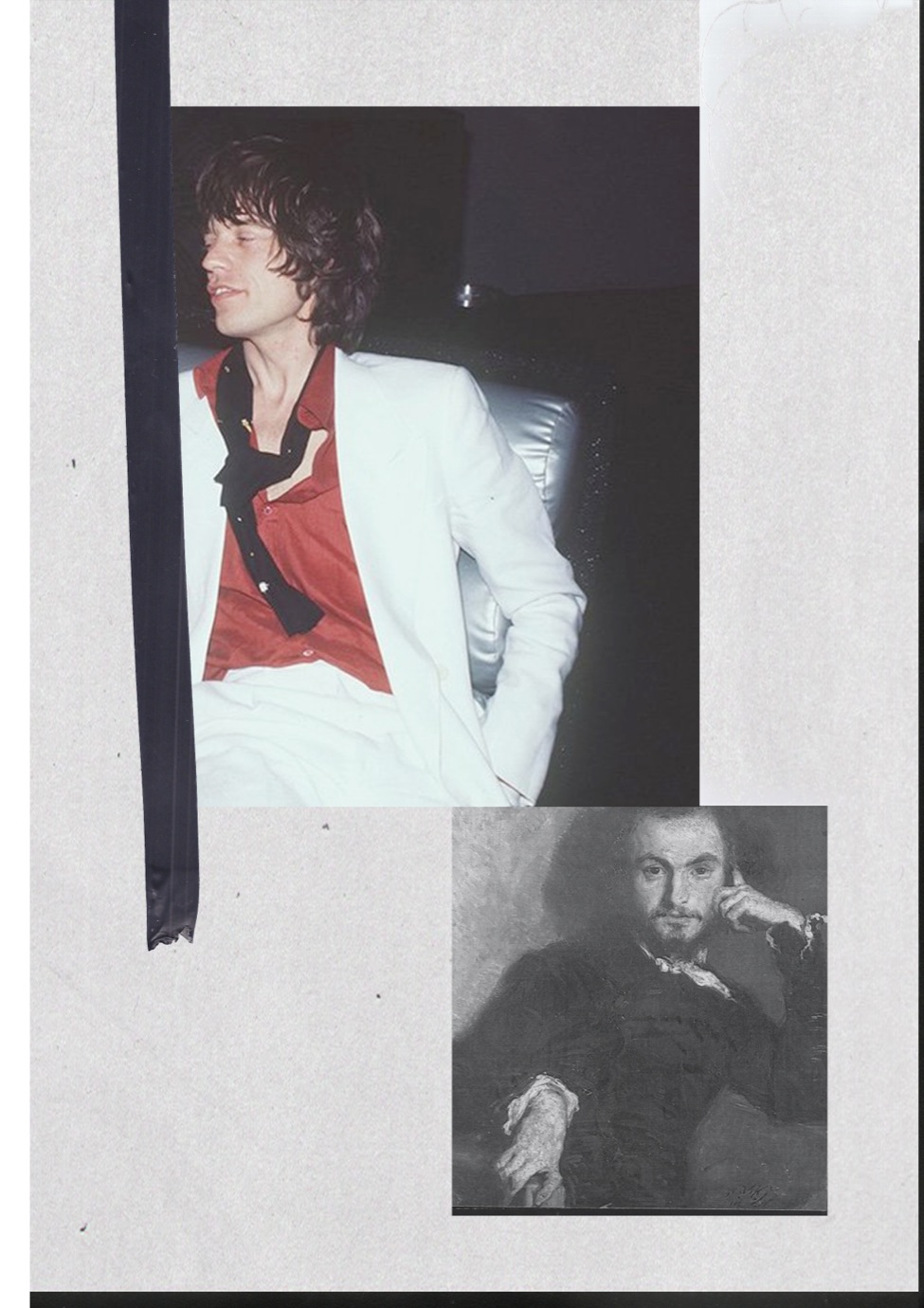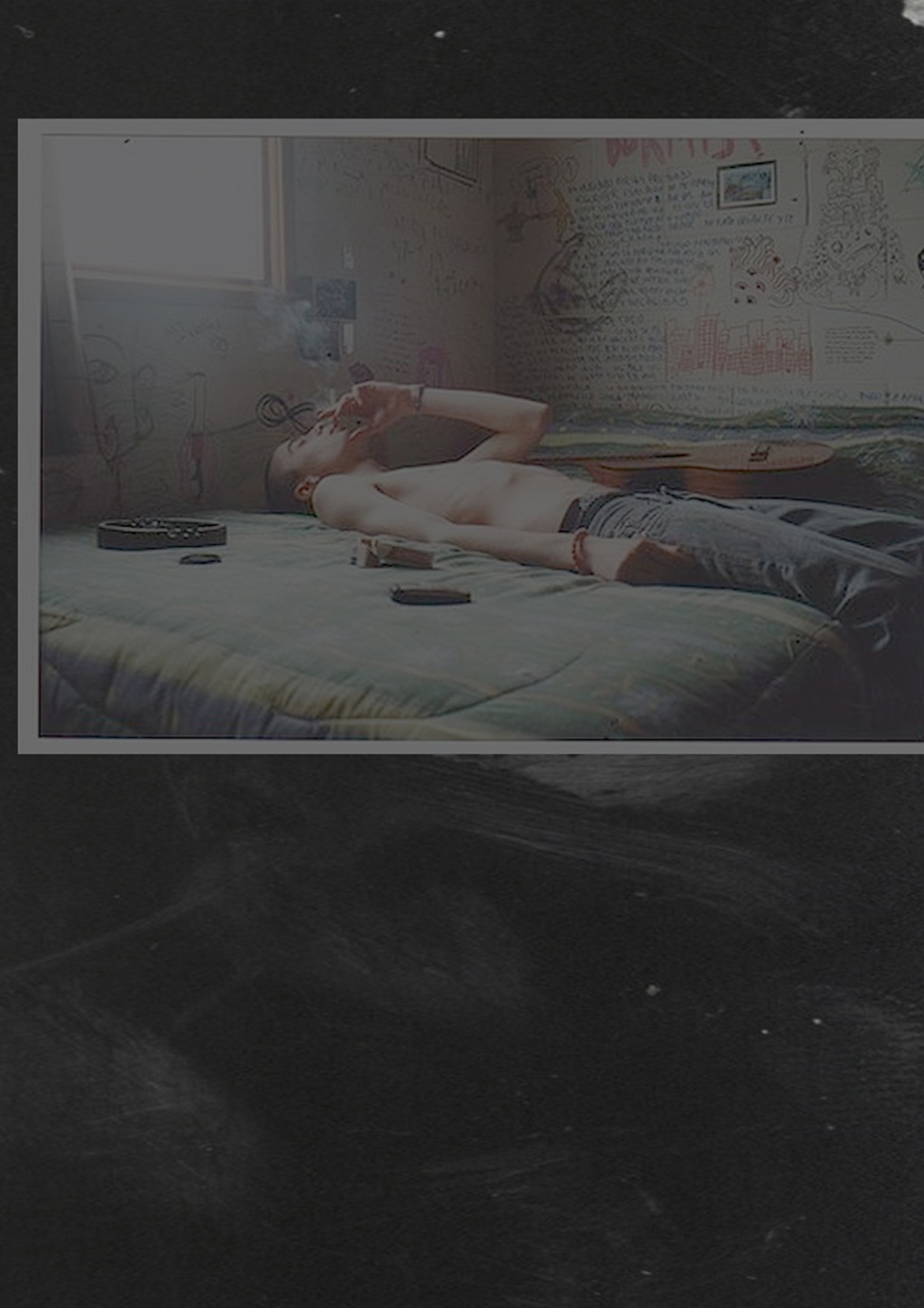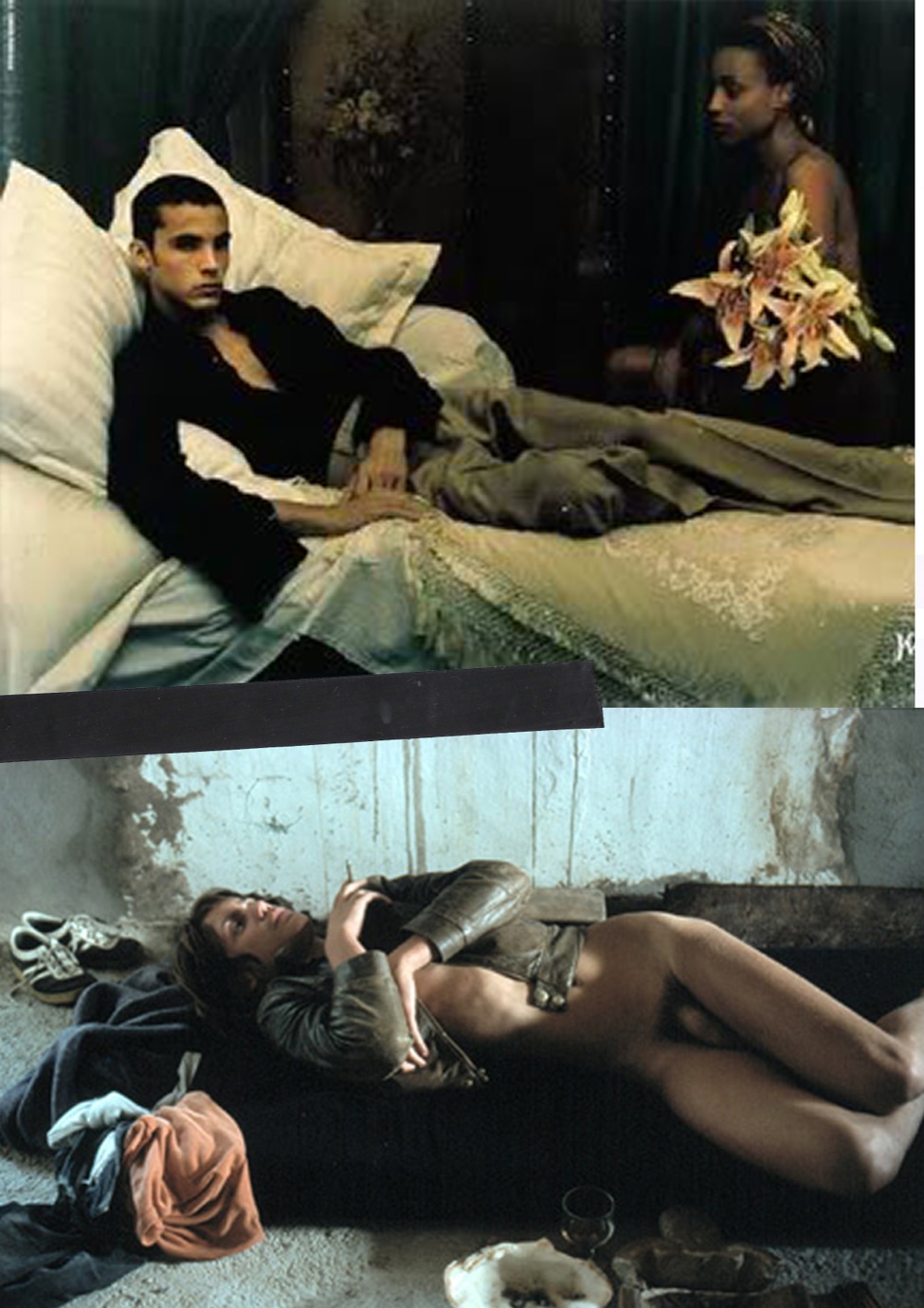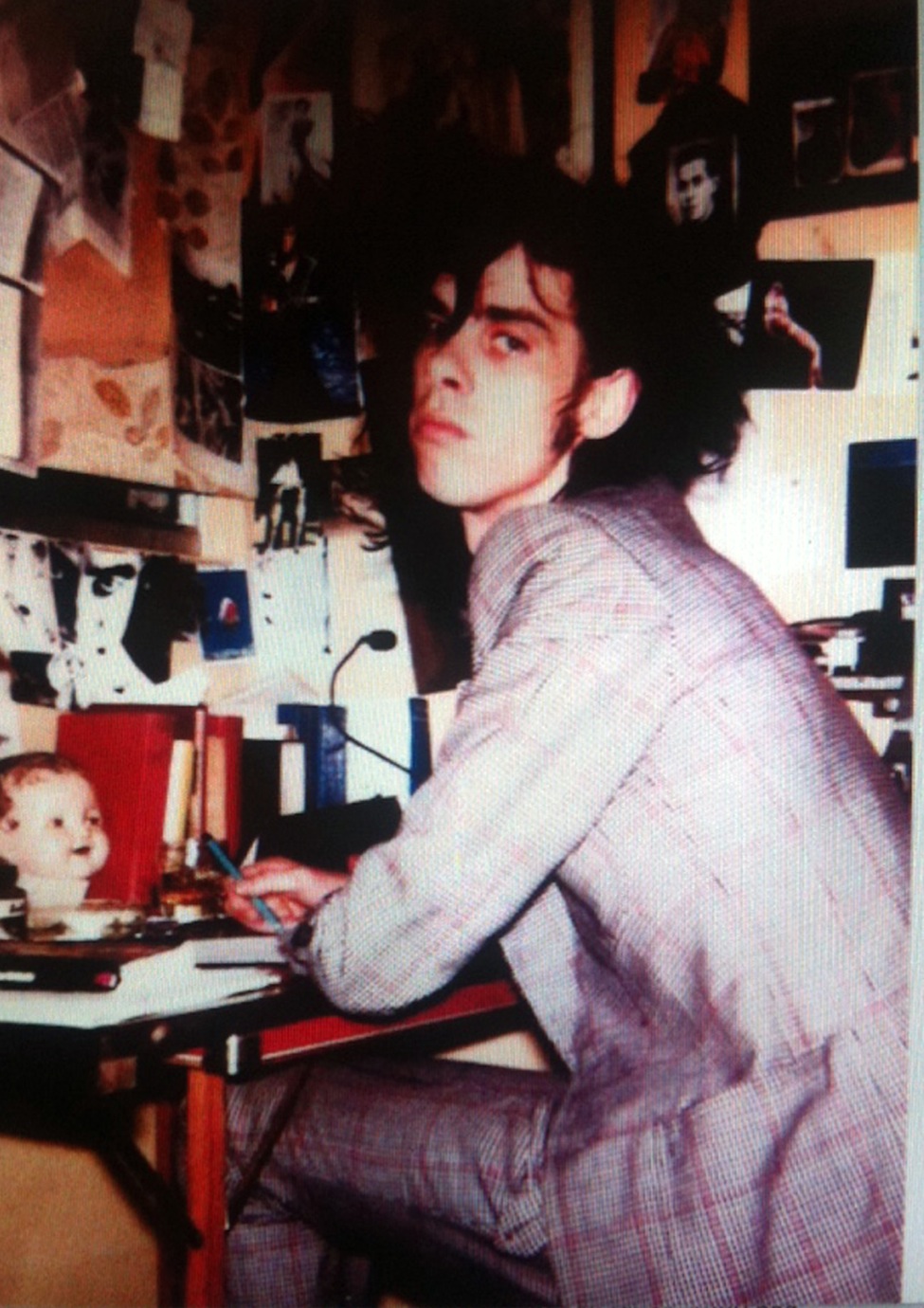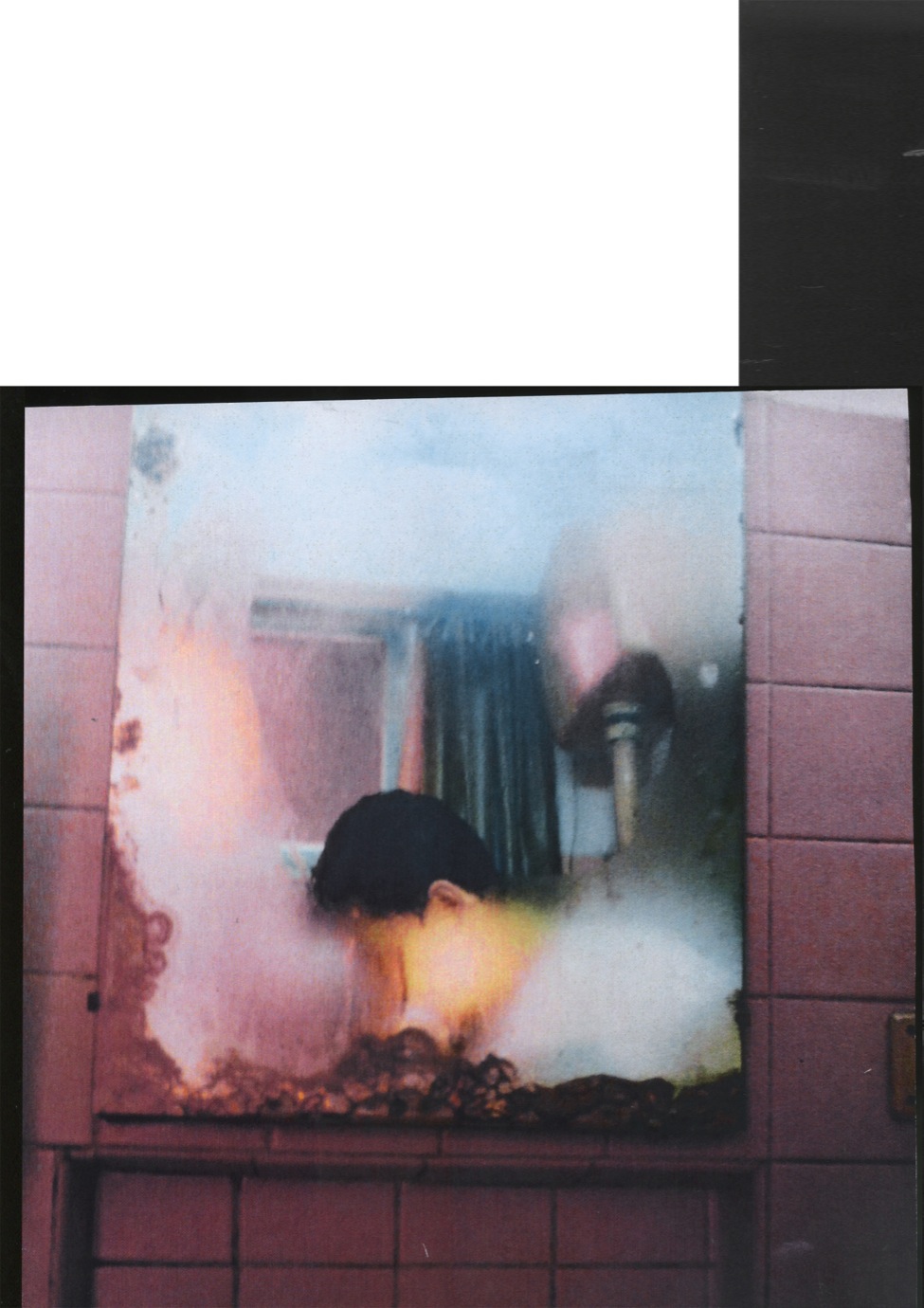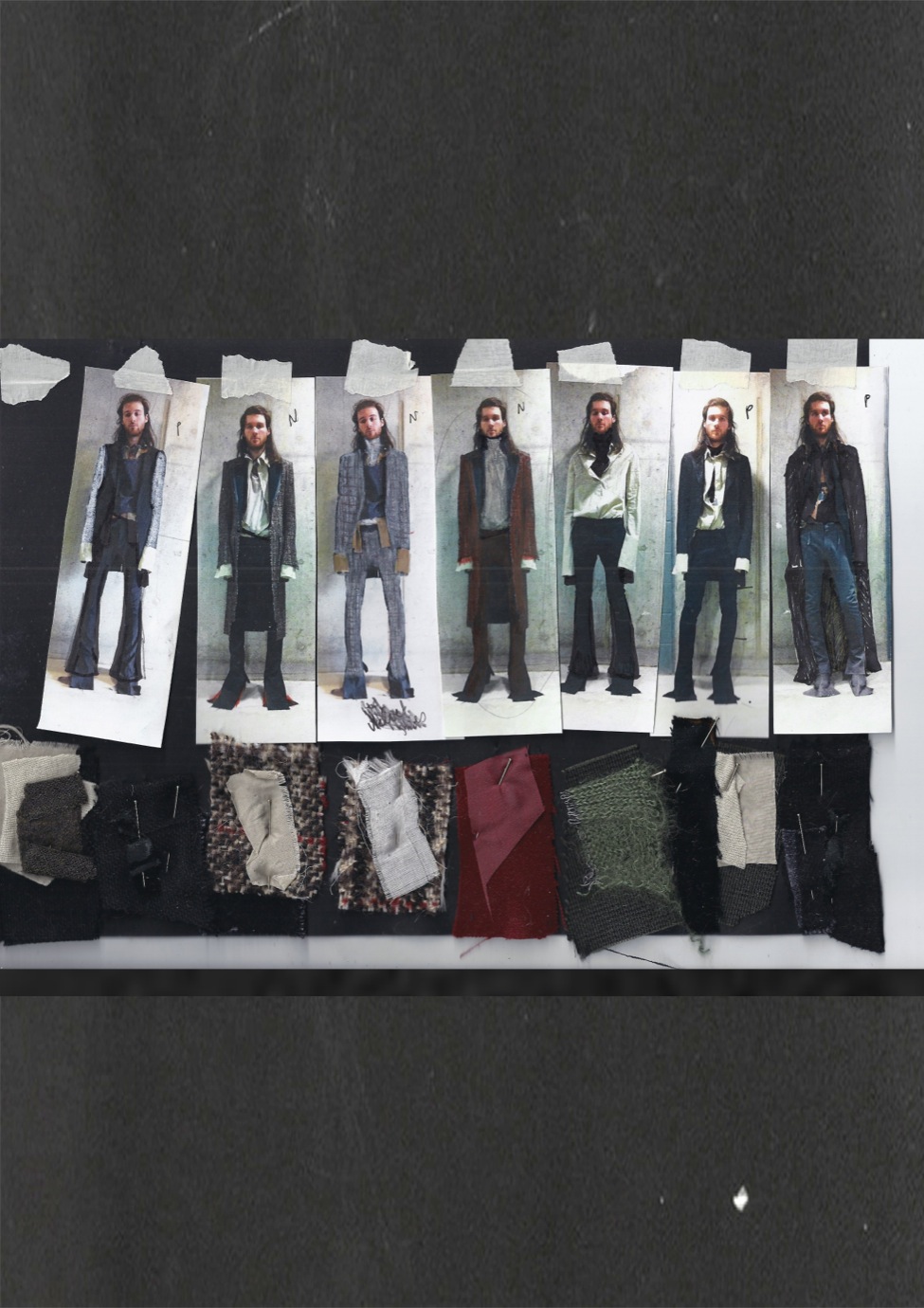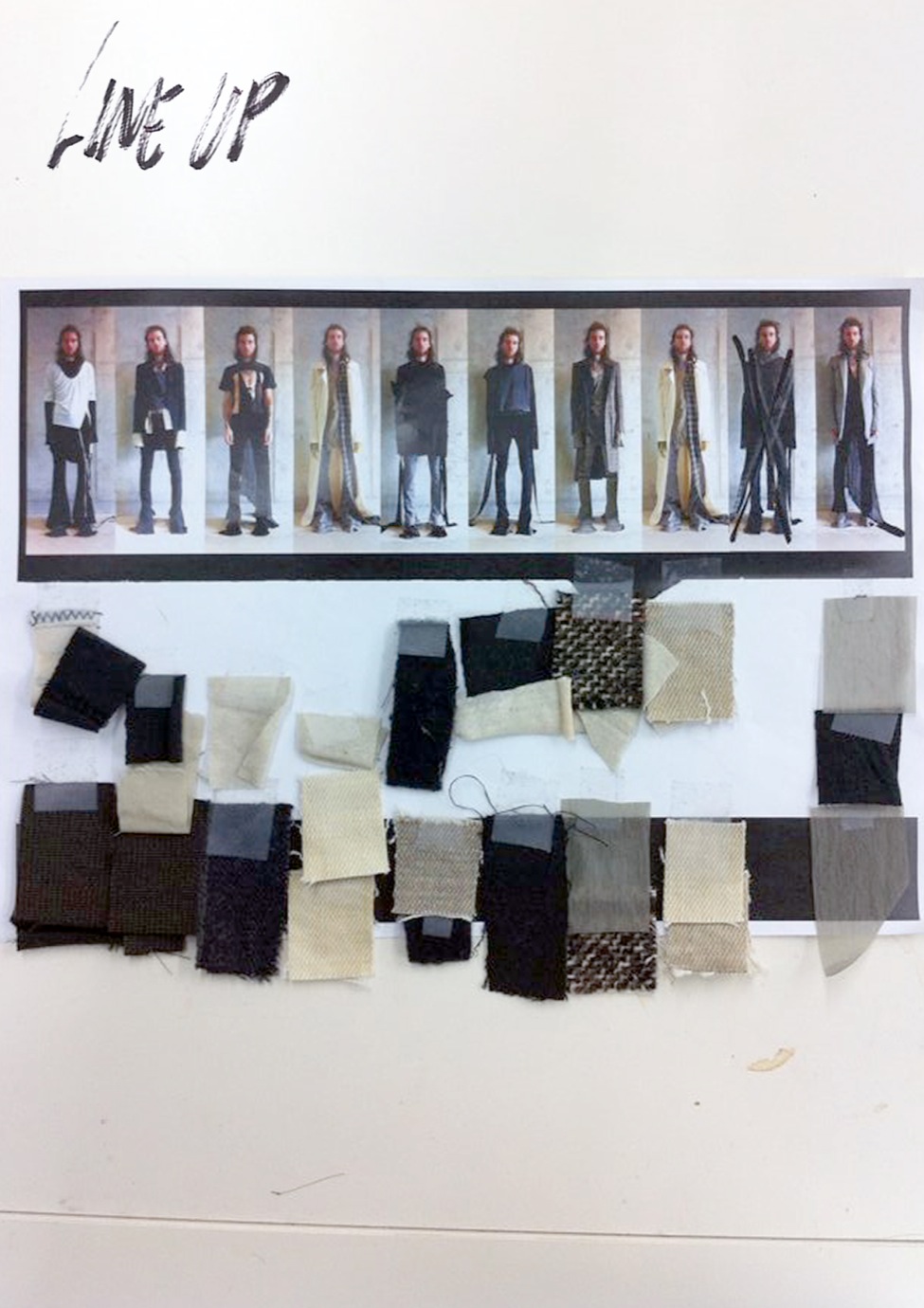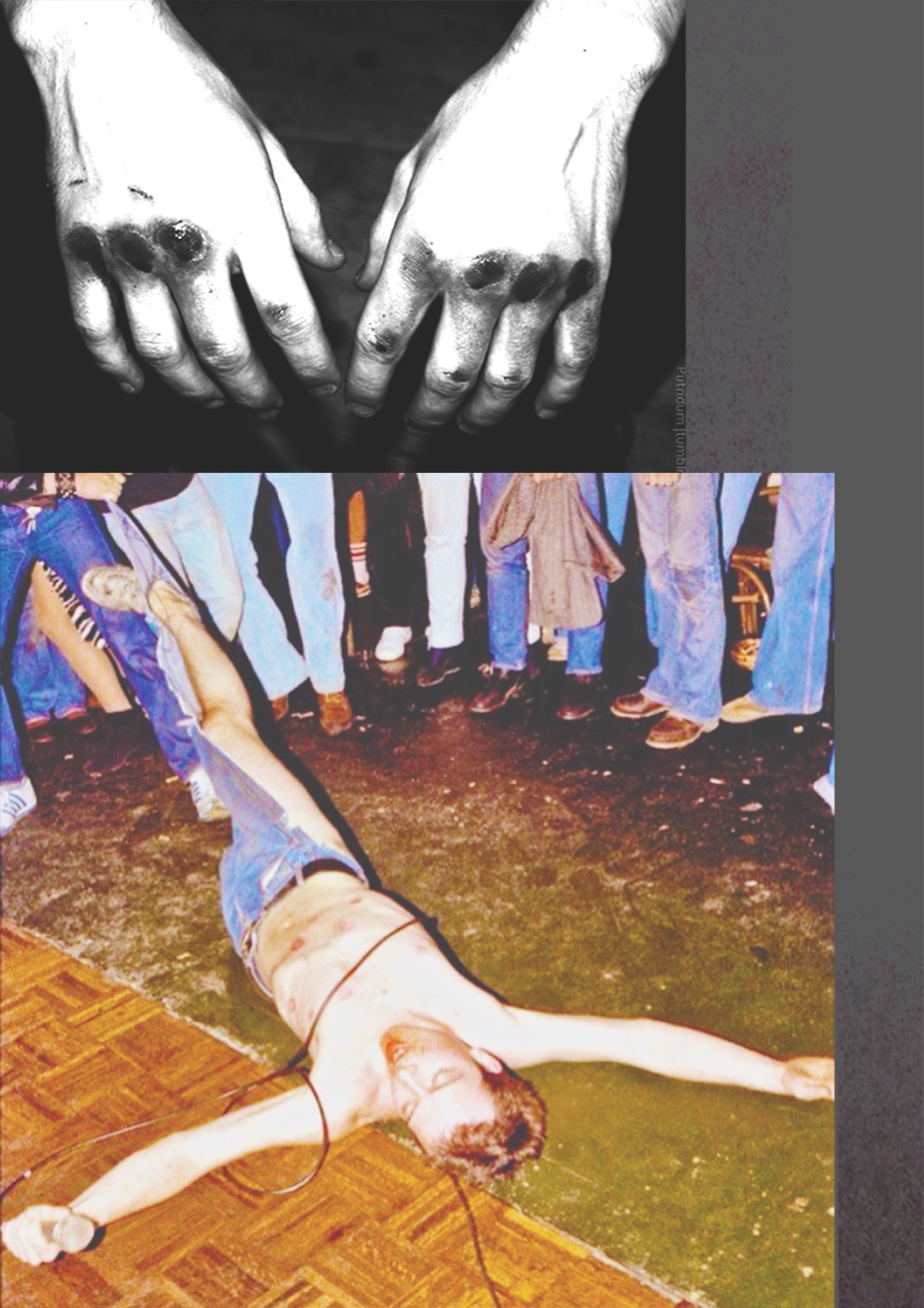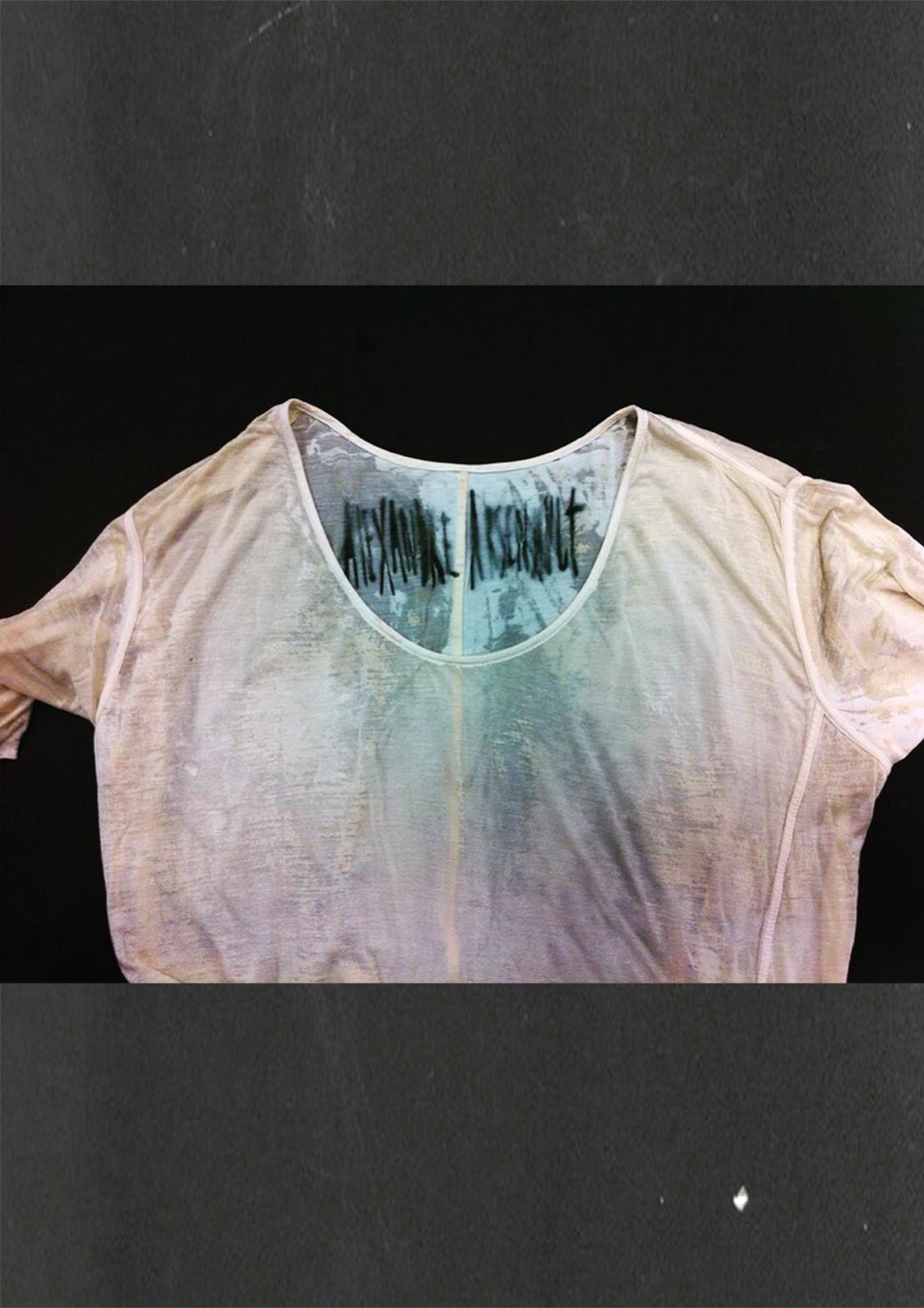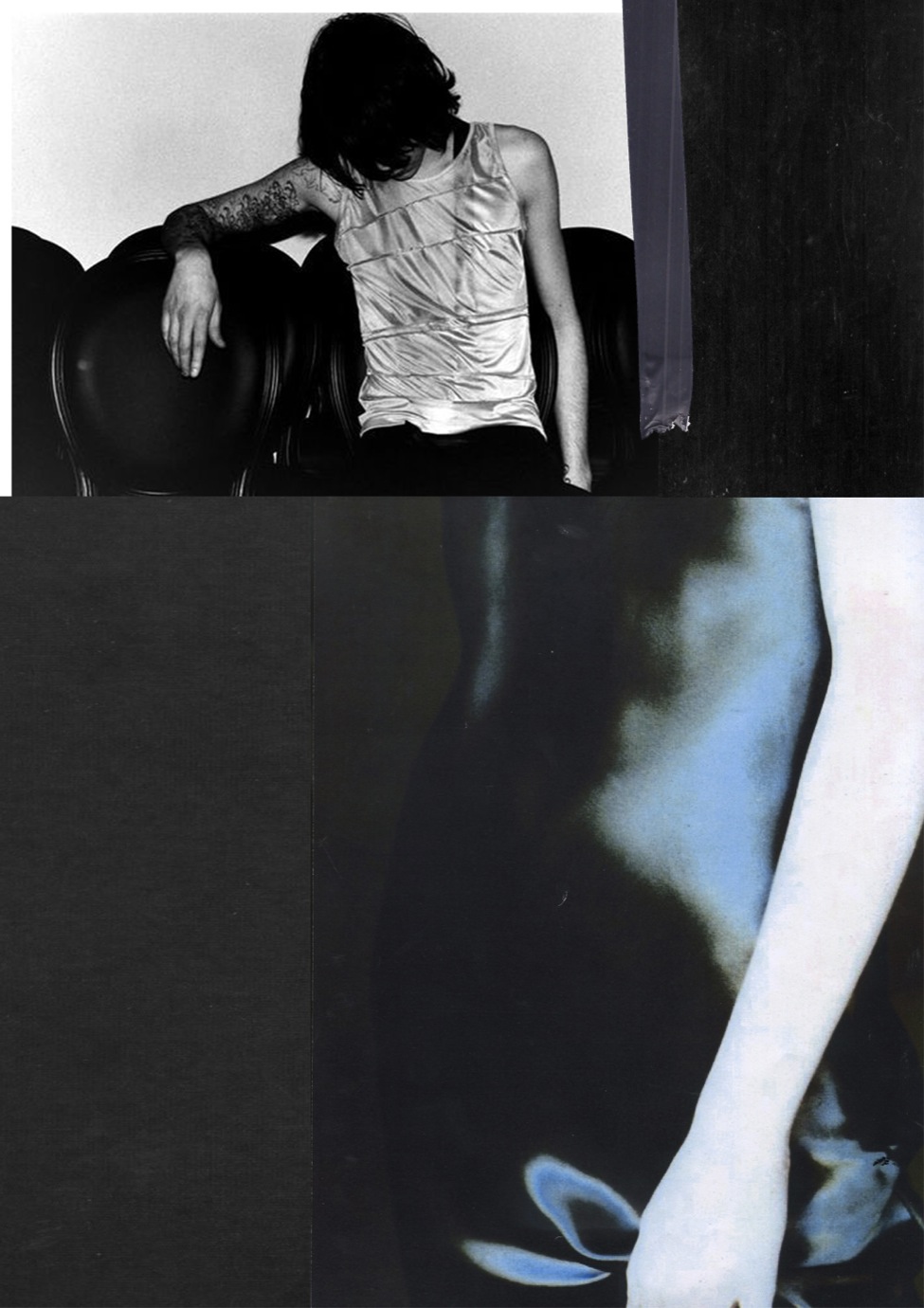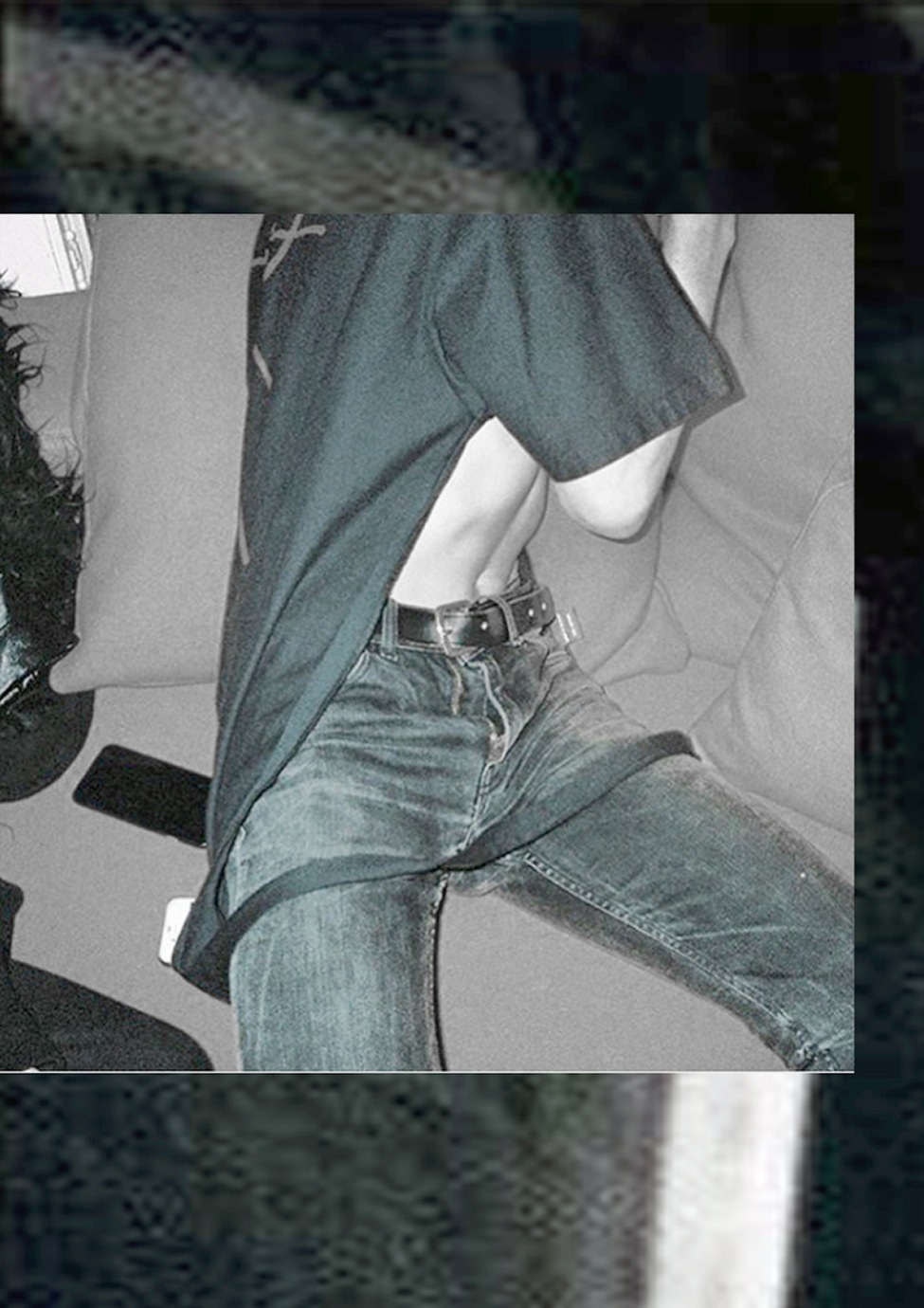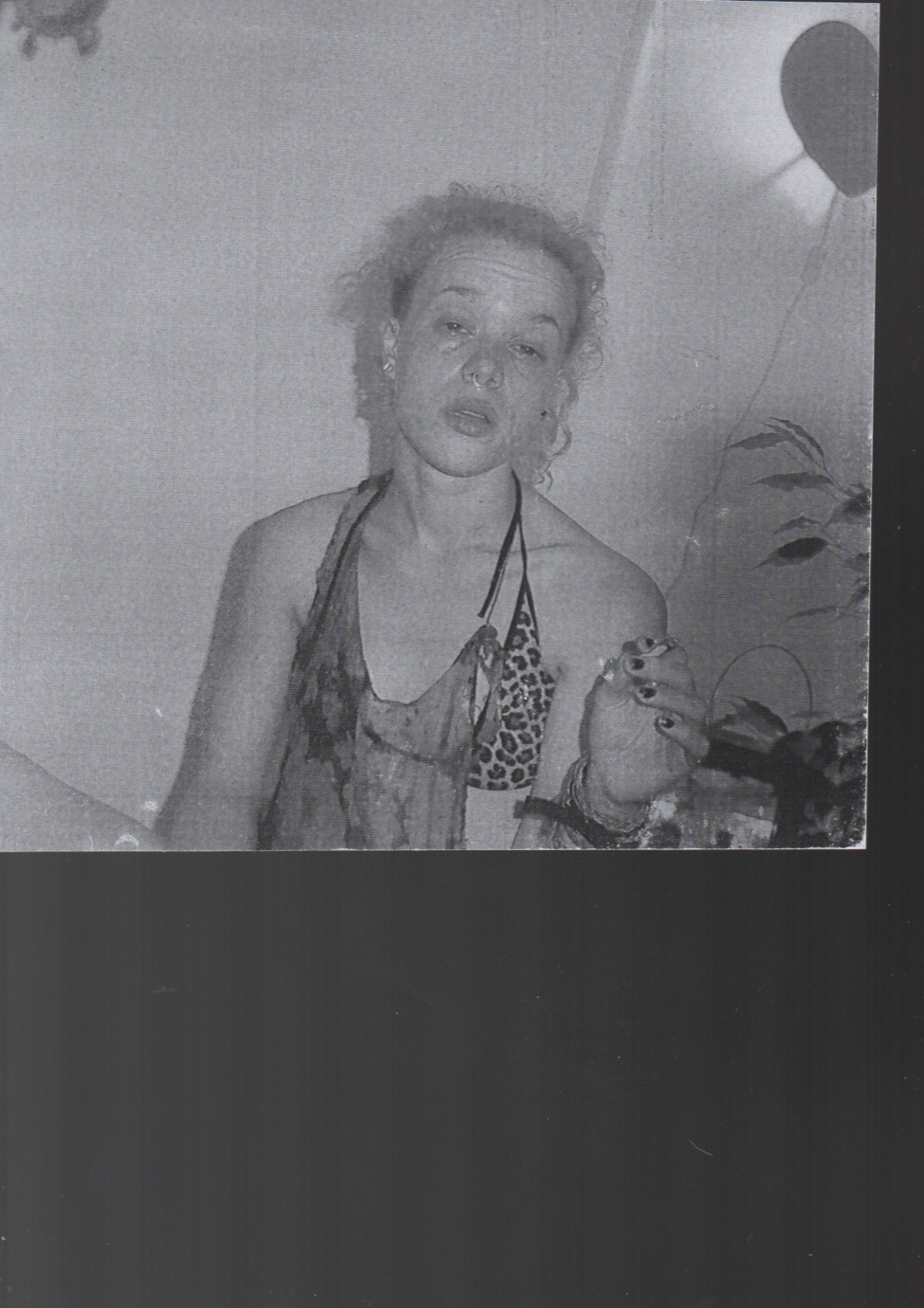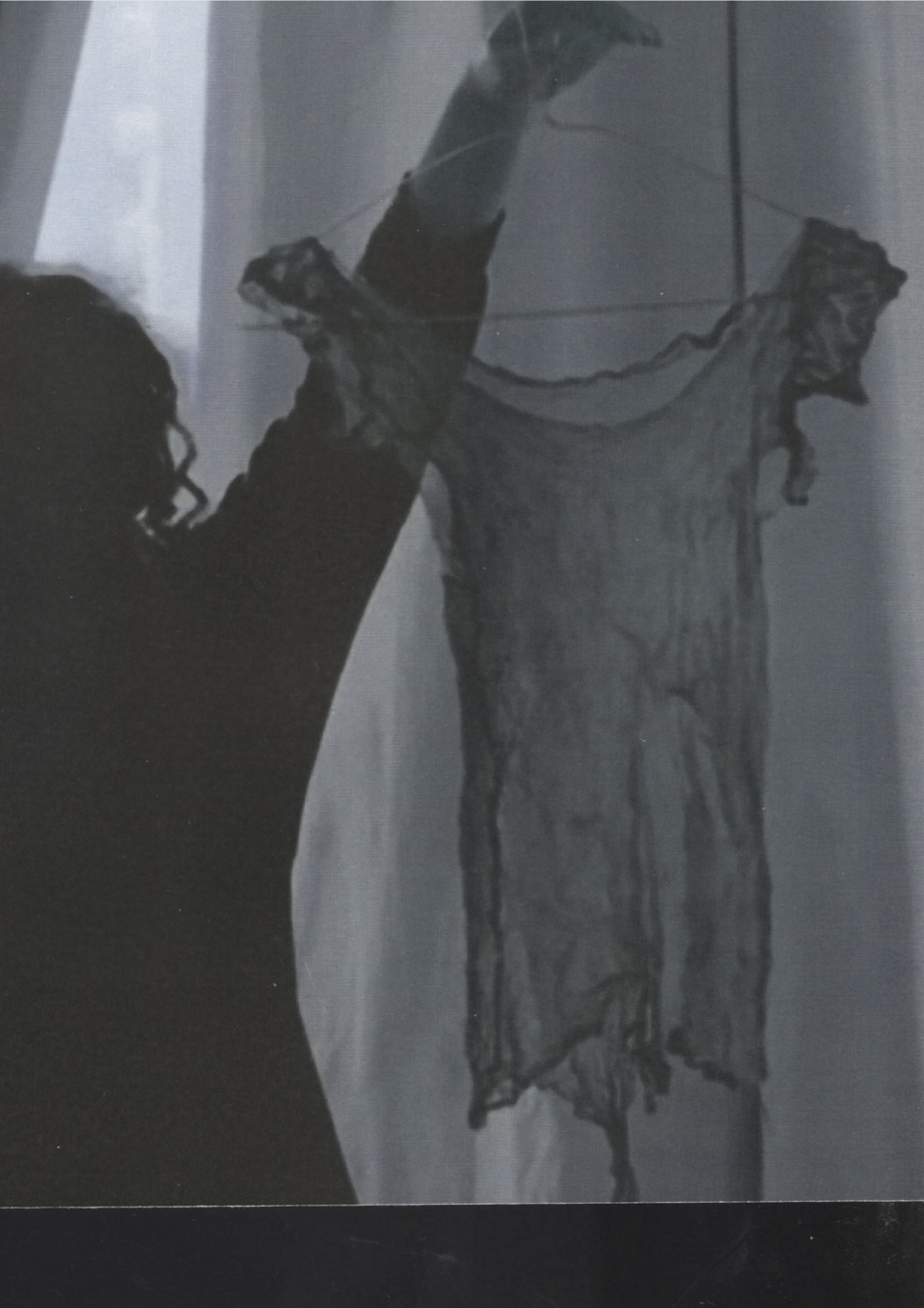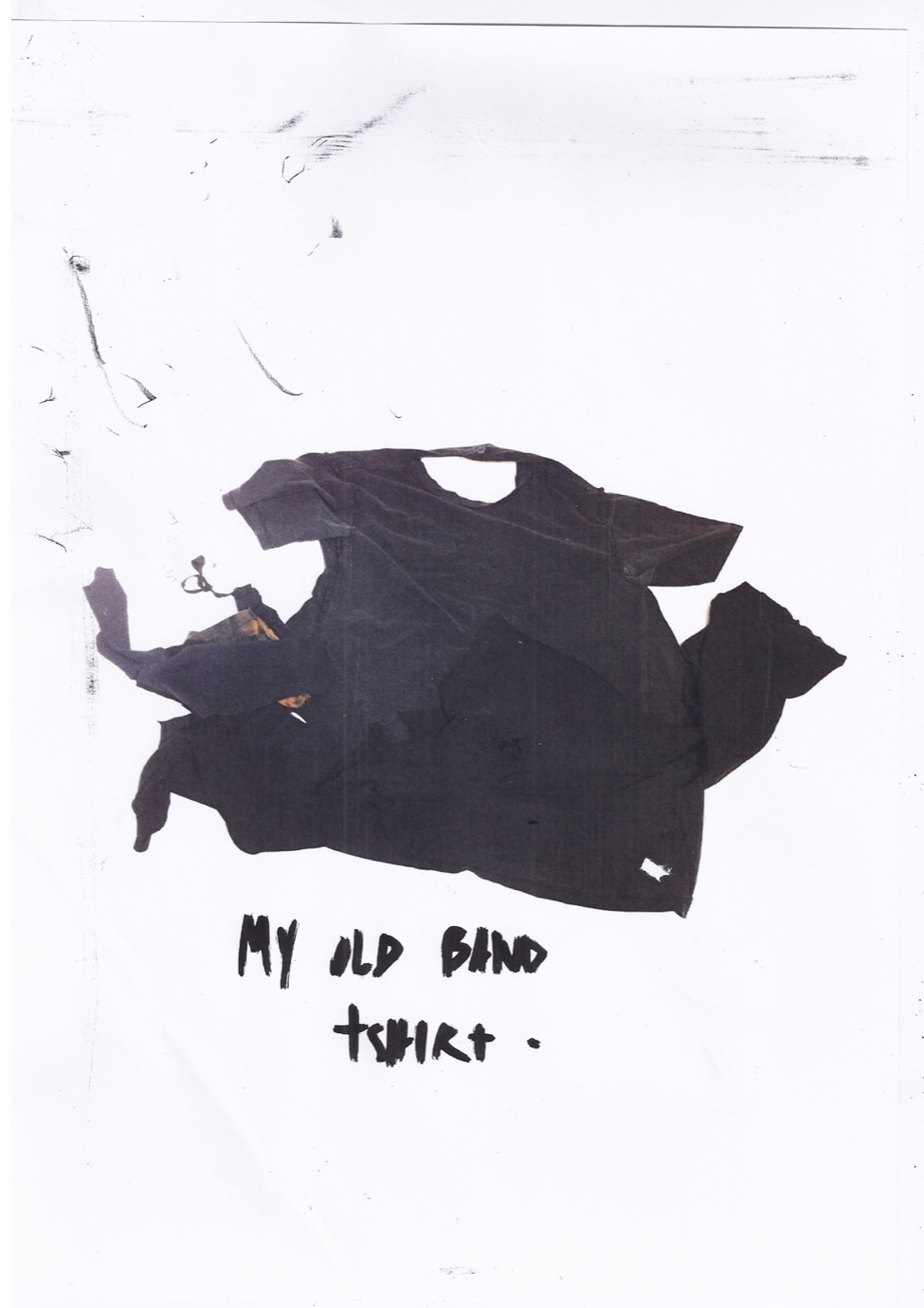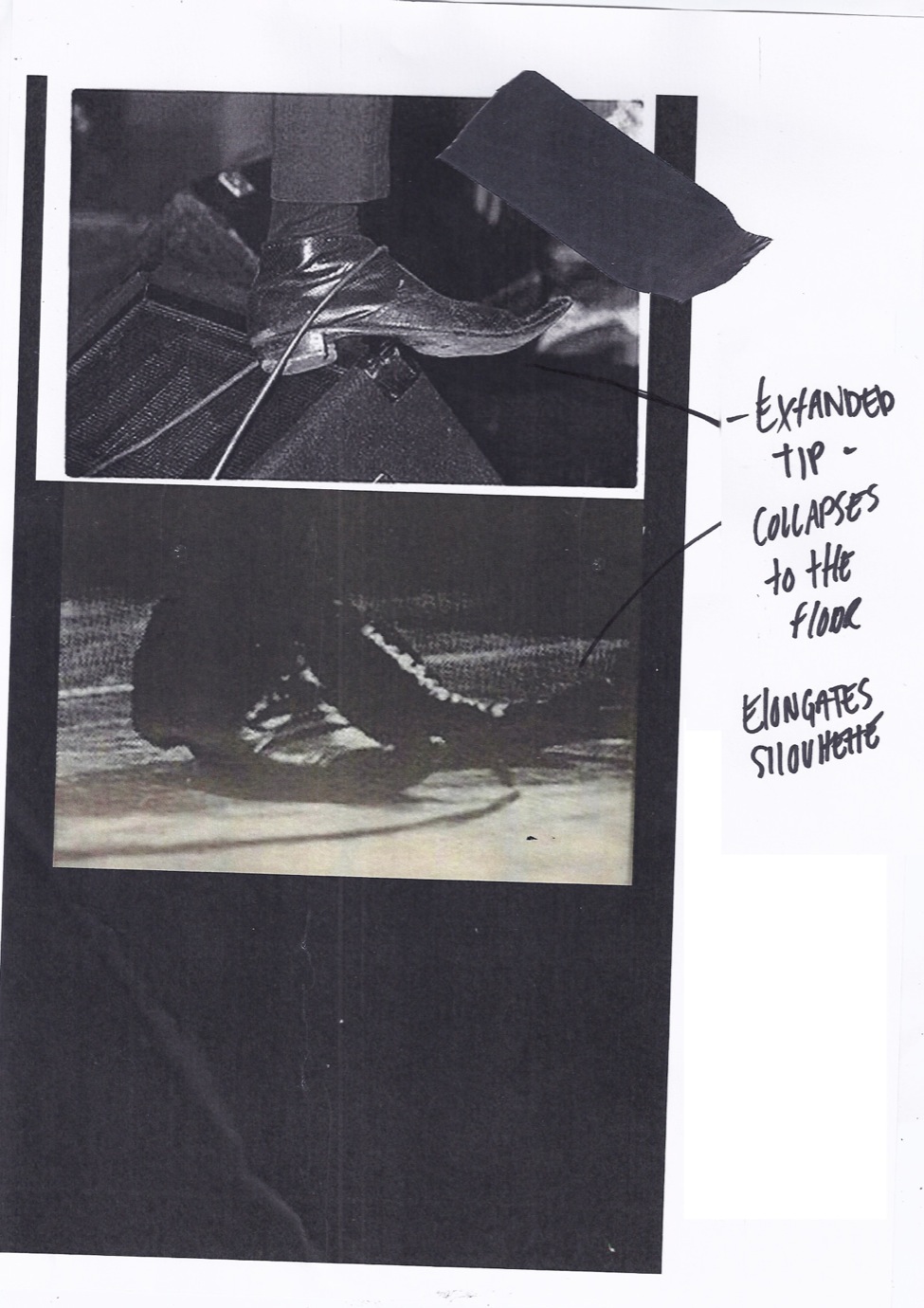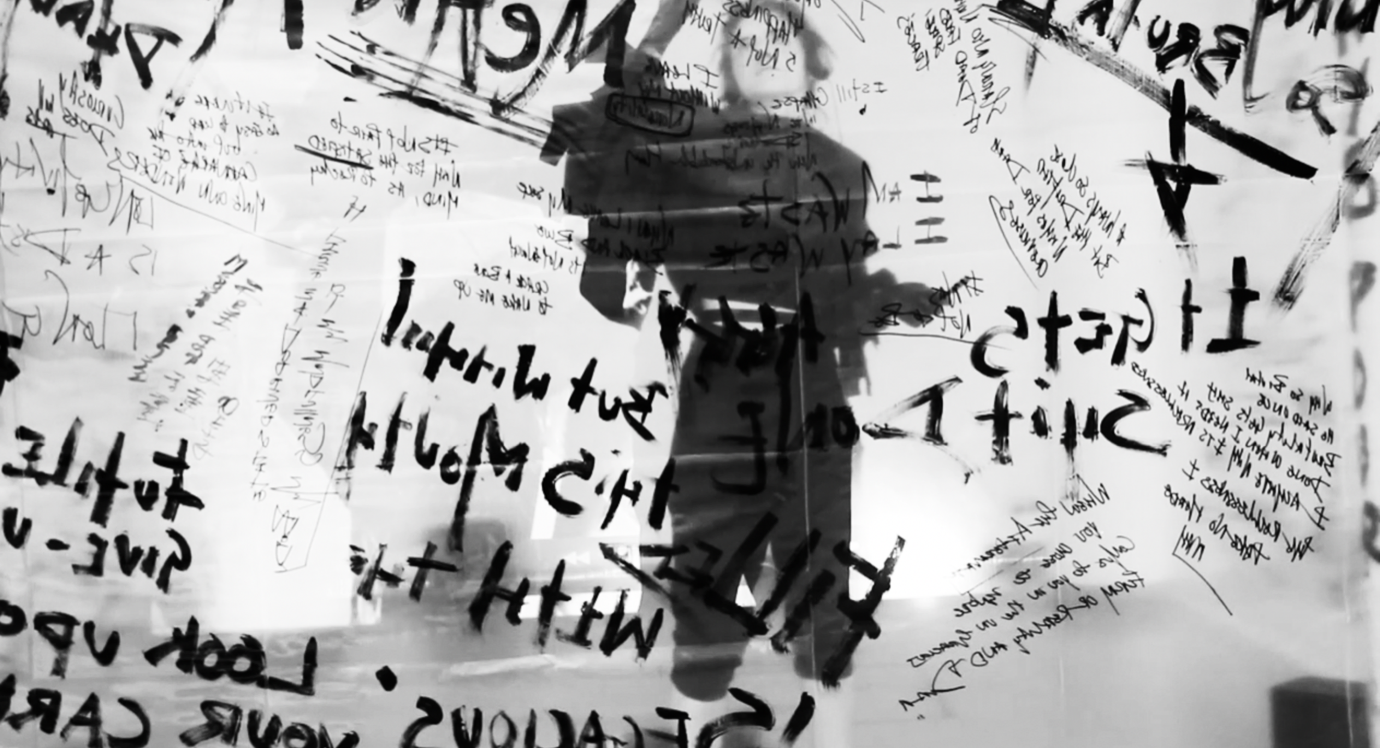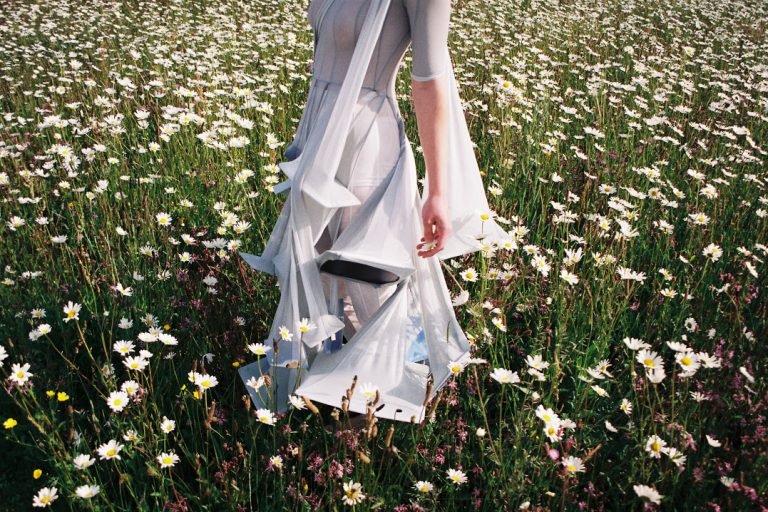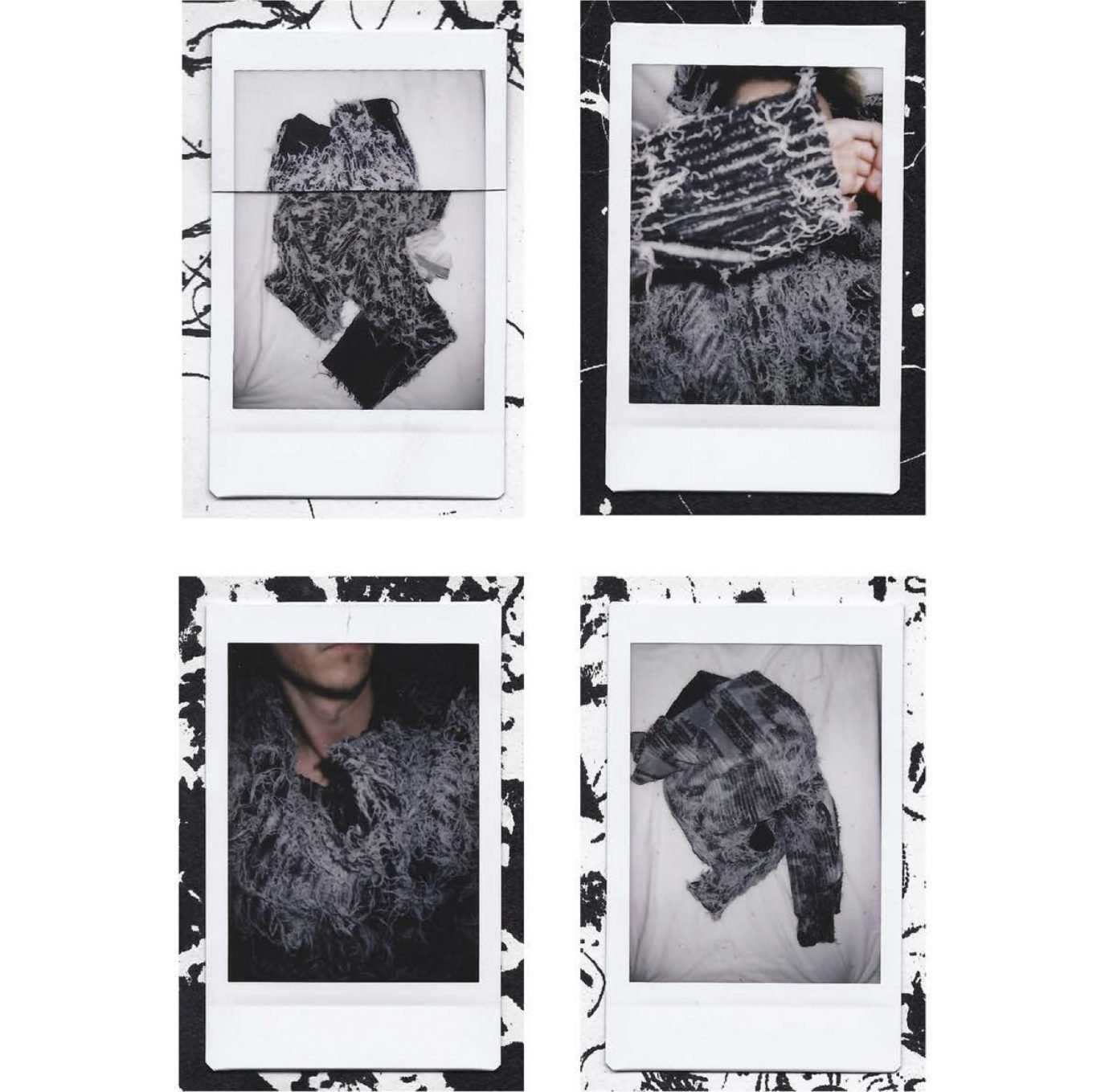“THEY HAVE TO BREAK YOU DOWN AND SLAP YOU IN DIFFERENT DIRECTIONS UNTIL YOU REALISE FOR YOURSELF, THIS SHOULDER IS NOT RIGHT BECAUSE OF THIS… THIS LAPEL IS NOT PERFECT BECAUSE IT DOES NOT SAY THE SAME MESSAGE AS THIS OTHER JACKET… IT’S ALL ABOUT INFORMATION AND COMMUNICATION.”
This feeling of abandonment and void is equally seen through Alexandre’s lookbook, where the face of the wearer is deleted: this faceless man becomes a universal figure, able to explore masculinity and challenge the ever-existing passé archetypes of the alpha-male. “I think there’s a lack of garments which acknowledge the fluidity of masculinity,” he says, adding that this is something he wants to continue to explore in future projects. Alexandre enjoys to play with such tensions, highlighting that “there is always a fight that is present within my work, something which is tearing and signifying a struggle.” If we are to follow the established notion that your work is an extension of yourself, then this fight may be the incarnation of Alex’s struggle throughout his time at Central Saint Martins. He came to the school for the Undergraduate Diploma Course, led by David Kappo: “I had studied my BA in Canada at Lasalle College, and so my education was deeply technical. We were graded on if a notch was a millimetre away from where it was meant to be. We had marketing classes, trend classes, sewing classes, drawing classes: it was all about technicality, and this training and knowledge has proven to be invaluable for me.”
The Undergraduate Diploma, it seems, enabled Alexandre to approach fashion from a new perspective. “It makes you think about fashion the way London thinks about fashion, which is a really unique methodology compared to the rest of the world.” His time upon the MA emphasized this even further, and the evaluative way in which he speaks about it demonstrates precisely how much he learnt. “I can be extremely stubborn and, as pretentious as it sounds… Me being a perfectionist is a huge hindrance.” It was after the precollection, when he was not satisfied with any work he had produced, that a shift occurred, and he accepted and welcomed change. “I realised there was a problem and so I changed the whole collection, presenting something I made in two weeks. The same happened in this final collection and it’s like: Shit! Why didn’t I do that from the start?”


